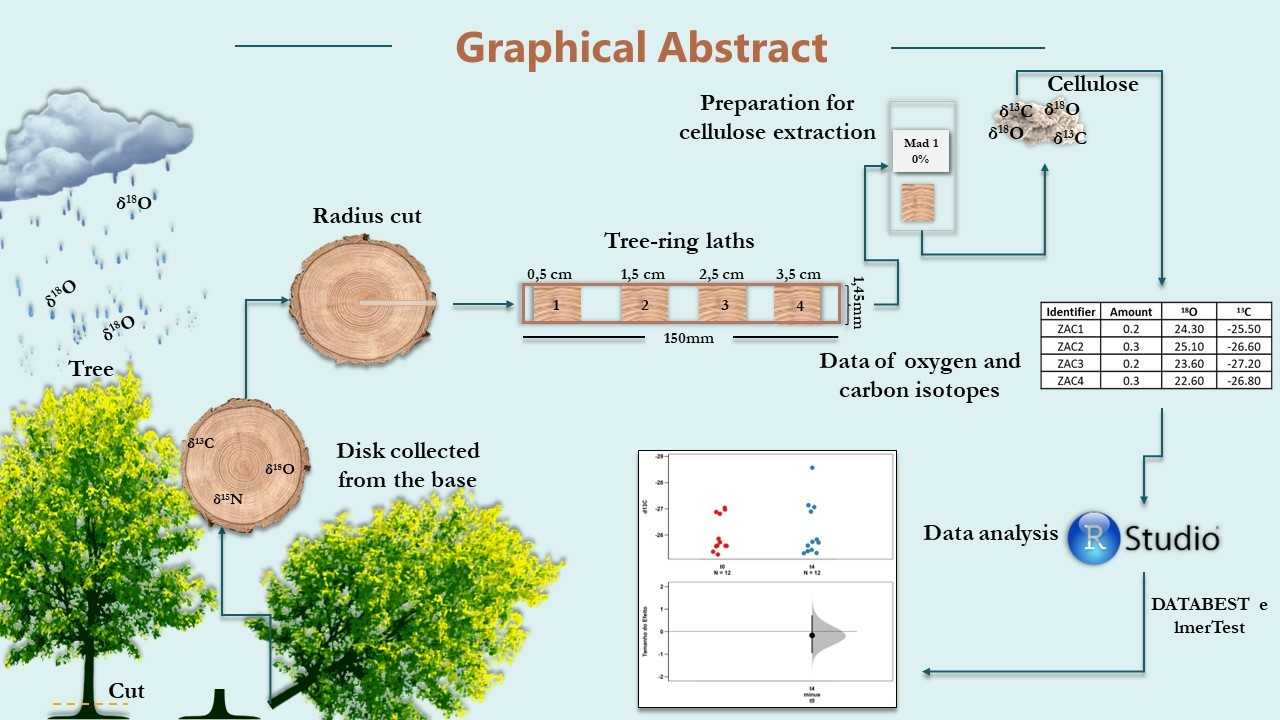Isótopos estáveis de oxigênio e carbono em anéis de crescimento: Uma comparação entre diferentes tempos de reação para obtenção de alfa-celulose
DOI:
https://doi.org/10.36524/ric.v9i3.2165Palavras-chave:
Química da Madeira, Isótopo Estável δ13C, Isótopo Estável δ18O, Anéis de CrescimentoResumo
Os isótopos δ18O e δ13C são indicadores geoclimáticos e ambientais e estão sendo empregados como ferramenta de rastreamento de madeira. Há inúmeras metodologias para obtenção da celulose, que é o material utilizado para análise isotópica de material lenhoso, contudo, os tempos de extração são muito longos deixando o processo analítico demorado e, em alguns casos, inviáveis. Temos como objetivo comparar diferentes tempos de extração e se eles irão interferir no sinal isotópico para carbono e oxigênio. Foram realizados 4 procedimentos para obtenção da celulose, em diferentes tempos, de 48 e 6 horas, para remoção dos extrativos. A primeira etapa consiste no processo de remoção dos extrativos na sequência (1) álcool/ tolueno (1:1), (2) álcool, (3) acetona e (4) água. O processo de deslignificação foi realizado em duas sequencias, com (1) clorito e ácido acético glacial por 6 horas e (2) clorito de sódio por 1 hora. As hemiceluloses foram removidas com solução de hidróxido de sódio a 17% de 1 horas com três repetições a α – celulose foi obtida em solução ácida de ácido acético glacial a 10% e, ao final do tratamento, as amostras foram secas em estufas a 70°C por 2 horas. Para análises isotópicas, as amostras foram secas e pesas, sendo submetida ao espectrômetro de massa para análise da razão isotópica de 18O/16O e 13C/12C. Os resultados sugerem uma tendência que o tempo de remoção dos extrativos presentes na madeira interferem na leitura do sinal isotópico do δ18O, o que não foi observado para δ13C.

Downloads
Publicado
Edição
Seção
Licença
Copyright (c) 2023 Revista Ifes Ciência

Este trabalho está licenciado sob uma licença Creative Commons Attribution-NonCommercial-NoDerivatives 4.0 International License.
Autores que publicam nesta revista concordam com os seguintes termos:
- Autores mantém os direitos autorais e concedem à revista o direito de primeira publicação, com o trabalho simultaneamente licenciado sob a Licença Creative Commons Attribution que permite o compartilhamento do trabalho com reconhecimento da autoria e publicação inicial nesta revista.
b. Autores têm permissão e são estimulados a publicar e distribuir seu trabalho online (ex.: em repositórios institucionais ou na sua página pessoal) a qualquer ponto antes ou durante o processo editorial, já que isso pode gerar alterações produtivas, bem como aumentar o impacto e a citação do trabalho publicado (Veja O Efeito do Acesso Livre).


